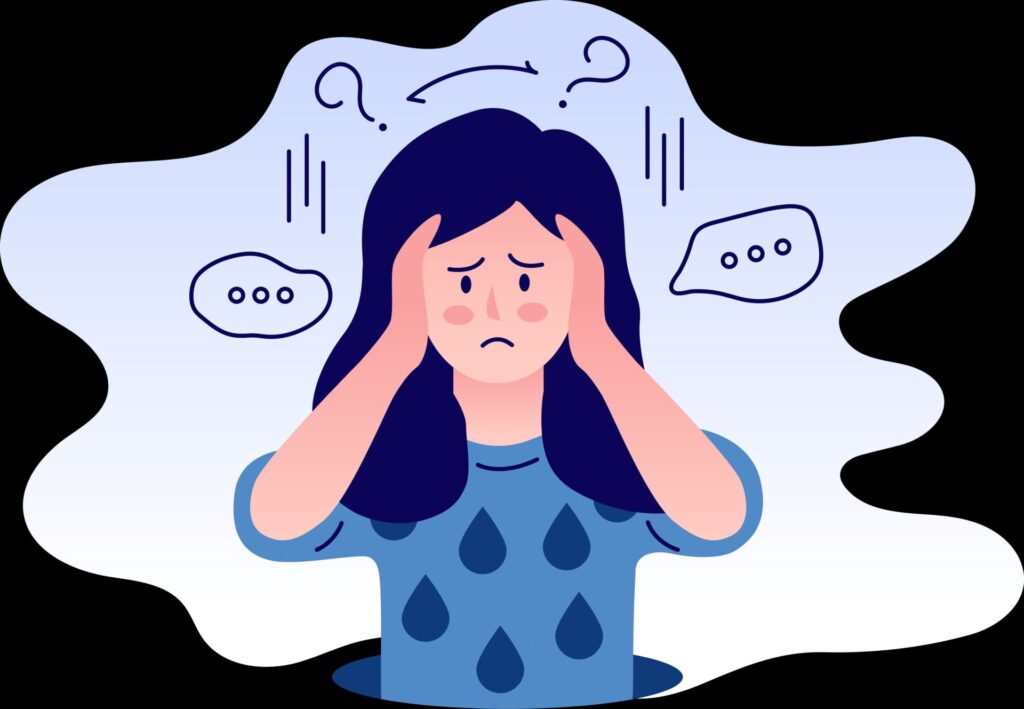
The world of video game development, for all its creative allure and technological marvel, harbors a demanding truth often concealed behind the spectacle of launch trailers and glowing reviews. It’s a realm where passion frequently collides with grueling realities, culminating in “crunch time” – a period of excessive overtime and unrelenting pressure that has become a fixture within the industry. Far from being a mere anecdote, crunch time is a deeply entrenched challenge, raising significant concerns about the sustainability and ethical implications of how our digital worlds are brought to life, impacting not just the games, but the very lives of those who craft them.
For aspiring game developers dreaming of bringing their creative visions to fruition, or seasoned professionals navigating the ever-evolving landscape of digital entertainment, a comprehensive understanding of these intricacies is crucial. This isn’t merely about working long hours; it’s about systemic pressures that transform a passion into a crucible, impacting the individuals who pour their talent and time into crafting experiences enjoyed by millions. Developer comments such as “balancing work and personal life is no joke” or “work-life balance feels like a myth,” underscore a collective struggle, a shared experience of living in an industry that demands so much.
This article will embark on an in-depth analysis, peeling back the layers to reveal the complex interplay of factors that define the modern game developer’s existence. We will scrutinize the historical evolution and current manifestations of crunch, examine its profound physical and mental health consequences, and explore how these challenges ripple across diverse studio environments. Furthermore, we’ll uncover nascent but significant movements towards ameliorating these conditions, focusing on flexible work arrangements and the growing power of collective action through unionization.

1. **The Deep Roots and Modern Reality of Crunch Time** Crunch time, at its core, typically emerges during the final, most intense stages of a game’s development cycle, where project timelines meet the stark realities of creation. It’s triggered by “unforeseen delays,” “ambitious release dates,” or a “sudden increase in project scope.” These elements combine to form a perfect storm, transforming the development environment into one of constant, intense pressure.
This period’s defining characteristic is “Intense Pressure.” Developers face an “unrealistic deadlines,” creating a high-stress environment where every hour, every line of code, and every asset becomes critically important. The commitment is staggering, with “Workdays frequently exceed 60 hours per week, with some developers reporting 80-hour workweeks during crunch periods.” Developer comments like “Sometimes I feel like I’m living in my office instead of my home” deeply resonate.
Historically, crunch culture was “deeply ingrained in the industry,” a legacy born from rapid technological advancement and fierce market competition. While some studios attempted reforms, the “pressure to deliver high-quality games within aggressive timelines often necessitates extended work hours, perpetuating the cycle of crunch.” This cyclical nature highlights a deeply systemic issue. “Prioritization of Work” often eclipses personal life, leading to “strained relationships, neglected hobbies, and a decline in overall well-being,” a significant personal cost.
Read more about: Ever Wonder What A-List Stars Really Eat? These 15 Master Chefs Are Bringing the Heat (Right Into Their Homes!)

2. **The Physical Toll: Health Consequences of Excessive Overtime** The impact of crunch time extends far beyond temporary exhaustion. Prolonged intense work schedules carry significant and severe consequences for developers’ physical health, manifesting in issues that can persist long after a game ships. It’s about a fundamental compromise of the body’s integrity, underscoring the unsustainable nature of such practices.
A primary concern is “Physical Burnout,” encompassing “Increased risk of chronic illnesses.” Extended hours disrupt body rhythms, leading to “sleep deprivation,” “poor nutrition,” and a “weakened immune system.” All these elevate the “risk of developing chronic illnesses” and make developers susceptible to long-term health problems due to the erosion of basic health maintenance functions.
Furthermore, game development work’s “Prolonged periods of computer use” directly contributes to “Repetitive Strain Injuries (RSIs).” These musculoskeletal disorders, like carpal tunnel syndrome and persistent back pain, are not minor discomforts but can become chronic. Such injuries severely impact a developer’s quality of life and even their ability to continue in the profession.
Beyond specific ailments, “Fatigue and Exhaustion” become a constant companion. The context explains that “Constant fatigue can impair cognitive function, reduce productivity, and increase the risk of accidents.” The irony is profound: the push for increased output during crunch can, in the long run, diminish a developer’s capacity to perform, creating a vicious cycle where exhaustion feeds into reduced efficiency.

3. **The Mental Battle: Psychological Impacts on Developers** Beyond visible physical ailments, the relentless pressure and extended hours of crunch time exact an equally devastating toll on game developers’ mental well-being. The industry’s psychological landscape, particularly during these intense periods, can become a breeding ground for significant mental health challenges, transforming creative passion into profound distress.
High-pressure environments, coupled with unrealistic deadlines, powerfully trigger severe mental health issues. The context notes this can trigger “Anxiety and Depression,” leading to debilitating experiences. Developers report “feelings of hopelessness,” indicating deep-seated impacts beyond temporary sadness. Continuous demand to perform under duress, without adequate rest or personal time, creates fertile ground for these conditions.
A pervasive outcome of prolonged crunch is “Burnout.” This state is characterized not just by physical exhaustion, but by profound “emotional exhaustion, cynicism, and a sense of detachment from work.” Passionate pursuits can transform into alienation, eroding job satisfaction and personal identity, leading to comments like “I feel like I’m on the verge of collapsing from exhaustion.”
Tragically, some developers, struggling desperately to cope with immense stress, may resort to “unhealthy coping mechanisms.” The context mentions an “Increased risk of substance abuse,” specifically citing “excessive alcohol consumption or substance abuse to cope with stress.” This highlights dire psychological consequences, as individuals seek temporary solace, further entrenching them in self-destructive behaviors. Work-life balance becomes a constant, exhausting struggle.

4. **A Push for Change: Flexible Work Arrangements and Remote Options** In recognition of crunch time’s detrimental effects, progressive initiatives are underway to foster healthier work environments. These efforts represent a significant shift in mindset, acknowledging that productivity and creativity don’t have to come at the expense of developer health. This movement signals a critical evolution, from enduring crunch to actively seeking sustainable alternatives.
One impactful change is “Flexible Work Arrangements.” “Remote Work Options” have gained traction. The context states “Many studios are embracing remote work policies, allowing developers to maintain a better work-life balance and reduce commuting time.” This geographical flexibility profoundly alters the daily grind, providing developers more control over schedules and integrating work more seamlessly into their lives.
Complementing remote work, “Flexible Schedules” are adopted by forward-thinking studios. This policy “allows developers to adjust their schedules to accommodate personal commitments and improve overall well-being.” Autonomy to manage time around family, appointments, or energy peaks drastically reduces stress and contributes to a feeling of being valued.

5. **The Power of Collective Action: Unionization in Game Dev** Beyond individual studio policies, a powerful, organized movement for change is gaining significant momentum: unionization. This collective approach represents a long-term step towards systemic reform, empowering developers to advocate for their rights and well-being through unified action, tackling crunch from a position of strength and solidarity. It signifies a profound shift from individual coping to a collective pursuit of industry-wide standards.
“Unionization Efforts” are at the forefront, with organizations like the “Game Workers Alliance” leading the charge. These unions “advocate for improved working conditions, fair wages, and better benefits through collective bargaining.” By consolidating voices, unions provide a formal mechanism to negotiate directly with employers, seeking legally binding agreements that protect developers from exploitative practices and establish clear limits on work hours and overtime.
As expected, these efforts have “experienced some pushback,” reflecting tension between labor and management. Collective bargaining challenges traditional hierarchies. Despite resistance, “Increased Visibility” from unions is invaluable. They “raise awareness about the challenges faced by game developers and advocate for systemic changes,” bringing crunch into public discourse and making it harder for studios to ignore reform calls.
The act of unionizing indicates developers are no longer willing to silently accept grueling hours. It signals a collective demand for accountability and a future where creative talent is protected and respected. While challenging, unionization’s growing presence underscores a fundamental shift in how developers approach professional lives, asserting their right to humane and sustainable working conditions.

6. **Industry Commitments to “No-Crunch” Policies**The conversation around crunch has not been ignored by the industry’s titans, leading to a palpable shift in corporate philosophy. In a significant and positive development, some high-profile studios have now publicly committed to “no-crunch” policies, actively working to eliminate this pervasive issue from their development cycles. This strategic pivot signals a growing awareness among leadership that sustainable practices are not merely ethical choices, but critical for long-term innovation and the retention of invaluable talent. It represents a proactive step towards cultivating healthier, more consistently productive environments within the gaming sector.
This commitment extends far beyond simply stating a policy; it represents a deeper, more fundamental prioritization of employee well-being. Studios are increasingly recognizing that the health and satisfaction of their workforce directly impacts the quality and consistency of their creative output. Such pronouncements are more than just public relations; they are a direct challenge to the historical norm, indicating a genuine desire to redefine what successful game development looks like in the modern era. The industry is slowly but surely moving away from a mindset where intense suffering is seen as a prerequisite for crafting great games.
These forward-thinking studios are backing their “no-crunch” pledges with tangible support structures designed to uplift their teams. This includes offering comprehensive mental health resources, which are vital for an industry grappling with high-stress demands and creative pressures. Furthermore, wellness programs are being implemented to support physical health and encourage active lifestyles, while opportunities for professional development ensure developers can grow their skills without experiencing added pressure. These initiatives collectively aim to foster an environment where creativity thrives alongside personal health, forging a more holistic and sustainable approach to game creation.

7. **Empowering Developers: Skill Development for Efficiency and Well-being**Beyond the crucial aspect of open communication, developers can further empower themselves by actively cultivating a robust set of professional and personal skills. This extends far beyond mere technical proficiencies in coding or artistic design, encompassing a broader range of abilities that directly contribute to mitigating stress and enhancing overall efficiency. It’s about building a comprehensive toolkit that not only helps craft incredible games but also diligently safeguards one’s mental and physical health.
Key among these essential abilities are enhanced time management and astute prioritization skills. In a field characterized by intricate, multi-faceted projects with constantly evolving requirements, the capacity to effectively organize tasks, allocate time wisely, and distinguish between truly urgent and merely important responsibilities can dramatically reduce perceived pressure. Mastering these skills allows developers to streamline their workflows, meet internal milestones more effectively, and ultimately lessen the likelihood of encountering the dreaded last-minute rushes that invariably lead to crunch.
Furthermore, developing strong communication and negotiation skills is paramount for advocating effectively for one’s needs and well-being within a team dynamic. This includes articulating project challenges clearly, offering constructive solutions, and negotiating reasonable timelines and workloads with confidence. These are not merely “soft skills”; they are essential instruments for navigating complex team dynamics, managing expectations across disciplines, and ensuring that individual contributions are recognized and respected. Ultimately, a well-rounded skillset empowers developers to take greater control over their professional journey, fostering both personal growth and a healthier, more sustainable work-life balance.

8. **Management’s Crucial Role: Proactive Project Planning and Risk Assessment**The onus of preventing crunch cannot solely rest on individual developers or broad corporate policies; effective, enlightened management plays an absolutely pivotal role. Managers are the frontline architects of project execution, and their approach to planning can either create or alleviate the intense pressures developers face. It requires a strategic and empathetic outlook, recognizing that human capital, with its finite energy and boundless creativity, is the industry’s most valuable asset.
Central to this responsibility is conducting thorough project planning and comprehensive risk assessments right from a project’s earliest conception. This isn’t just about identifying what needs to be accomplished, but proactively anticipating potential roadblocks, technical complexities, and unforeseen challenges that could derail timelines. By meticulously mapping out these variables, managers can adjust schedules accordingly, building in essential buffer time and contingency plans to absorb unexpected hitches without resorting to punitive overtime. This foresight transforms potential crises into manageable challenges rather than catastrophic failures.
A practical and highly effective strategy involves breaking down large-scale, complex projects into smaller, more digestible, and ultimately more manageable milestones. This modular approach mitigates the overwhelming feeling of a monolithic deadline looming perpetually in the distance. Instead, it provides a series of achievable goals, offering regular opportunities for team feedback, crucial course correction, and the celebration of small victories. This not only actively avoids the dreaded last-minute rushes but also fosters a continuous sense of progress and bolstered morale, which are crucial for maintaining developer well-being and sustained productivity.

9. **Management’s Crucial Role: Investing in Employee Well-being and a Supportive Culture**Beyond effective project management, a truly progressive leadership understands that investing directly in employee well-being is not just a moral imperative, but a shrewd business decision with long-term returns. A healthy, supported, and engaged team is inherently a more productive, loyal, and innovative team. This profound commitment translates into tangible benefits and the deliberate cultivation of a supportive work culture that fosters a deep sense of belonging and individual value.
This critical investment often begins with offering competitive benefits packages that go beyond merely adequate compensation. Comprehensive health insurance is a fundamental component, but increasingly, forward-thinking studios are also providing robust mental health resources, recognizing the significant psychological toll the industry can exact. Generous paid time off is another non-negotiable component, allowing developers ample opportunity to rest, recharge, and maintain a vibrant personal life away from the demanding screen. These benefits unequivocally demonstrate that a studio genuinely cares for its employees’ holistic health and future.
Equally important is the deliberate cultivation of a truly supportive and inclusive work environment. This means fostering open communication channels where feedback is genuinely welcomed, mistakes are reframed as valuable learning opportunities, and diverse perspectives are actively sought and valued. When employee well-being is authentically prioritized—through transparent leadership, consistent recognition of effort, and active measures to combat harassment or discrimination—it creates a vital psychological safety net. This enables developers to thrive creatively, knowing their health, dignity, and contributions are paramount, ultimately leading to a more stable, resilient, and flourishing development team.

10. **Balancing the Demands: Navigating Inherent Stressors and Embracing Intrinsic Rewards**While much of this discussion has extensively centered on the acute issue of crunch time, it’s vital to acknowledge that game development carries a unique set of inherent stressors, even in the absence of excessive overtime. The very nature of creating intricate digital worlds, pushing technological boundaries, and catering to an often-demanding global audience presents its own distinct and enduring challenges. Understanding these persistent pressures helps to fully contextualize the demanding landscape that developers navigate daily, irrespective of studio policy.
These inherent stressors manifest in various complex forms: the constant pressure of tight project deadlines, even outside of crunch periods, which require unwavering focus and efficiency from start to finish. Technical challenges, involving complex coding, relentless debugging, and optimizing game performance across diverse platforms, can be mentally taxing and frequently lead to unexpected roadblocks. Then there’s the pervasive creative pressure to constantly innovate and craft truly engaging content, a formidable task in an incredibly crowded and competitive market. Industry competition, the continuous need to stand out, the perennial difficulty of achieving work-life balance even when trying, and the emotional impact of player feedback (both positive and negative) all contribute significantly to a demanding professional environment.
Yet, despite these considerable and multifaceted difficulties, game development remains a profoundly rewarding career choice for countless individuals within the industry. The intrinsic satisfaction of bringing complex creative visions to life, of seeing abstract ideas manifest into tangible, interactive realities, is an incredibly powerful and unique motivator. Developers often find immense joy in the intricate process of problem-solving, overcoming formidable technical hurdles, and ultimately witnessing players engage deeply with their carefully crafted creations. This constant intellectual and creative challenge, far from being solely negative, can in fact be a potent motivating factor, driving them to produce their best, most innovative work.
Indeed, the core appeal of the industry often lies precisely in this dynamic interplay of challenge and triumph. It’s the unique opportunity to seamlessly fuse cutting-edge art and advanced technology, compelling storytelling and intricate engineering, into immersive experiences that captivate millions worldwide. This deep creative fulfillment, coupled with the inherent collaborative spirit of development, frequently outweighs the daily grind for those truly passionate about the craft. The profound ability to craft entire worlds and unforgettable experiences, to leave a lasting mark on global entertainment culture, is an intrinsic reward that sustains many through the demanding realities of the profession.
For countless developers, the entire journey from initial concept to a fully playable, polished game is a deeply personal and creatively fulfilling endeavor. The moments of intense frustration are almost invariably balanced by exhilarating breakthroughs, and the arduous hours by the sheer exhilaration of seeing a game brilliantly come together. It is this powerful, intrinsic reward—the act of creation itself, the joy of player engagement, and the profound satisfaction of masterful craftsmanship—that ultimately balances the demanding realities, making game development a compelling and enduring career choice for those with the passion, resilience, and vision to thrive within its secret, captivating world.
The secret world of game developers is undeniably one of intense dedication and remarkable creativity, but it is also a landscape fraught with significant, persistent challenges. From the systemic pressures of crunch time to the constant evolution of technology and the ever-rising bar of player expectations, the journey to bringing digital worlds to life is far from easy. Yet, as the industry matures and a collective awareness deepens, a crucial shift towards more humane and sustainable practices is unequivocally fostering. Through transparent communication, empowered developers, and proactive, empathetic leadership, a future where passion doesn’t demand burnout is not just a pipe dream, but a tangible, achievable goal. By comprehensively prioritizing well-being and acknowledging the profound rewards of this demanding craft, we can collectively ensure that the incredible talent fueling this industry continues to innovate, create, and inspire for generations to come, without sacrificing their own health and vitality in the process.



